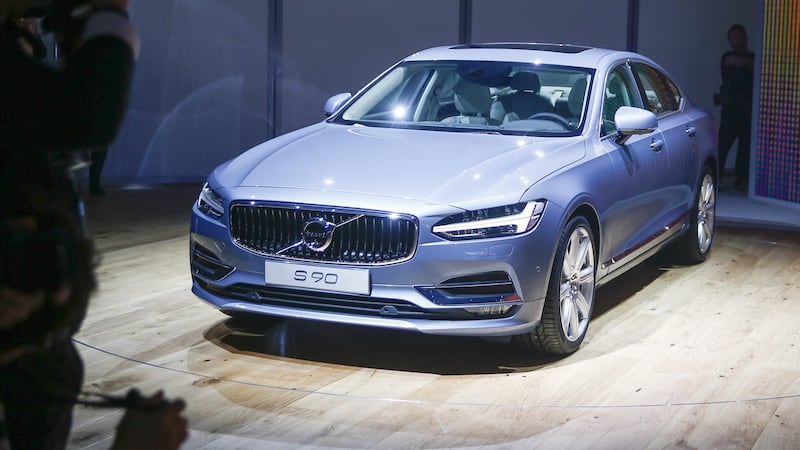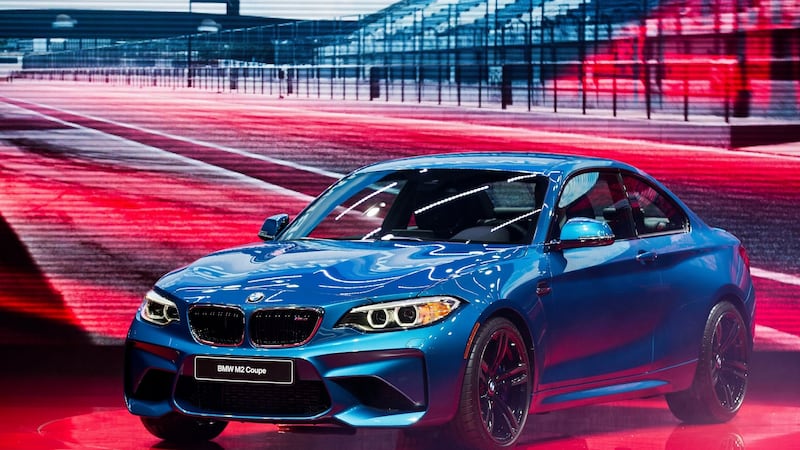Opening its doors barely a week after the Consumer Electronics Show in Las Vegas (better weather, hipper clientele and now effectively a motor show too) Detroit, or the North American International Auto Show looks more like a nervous dinosaur, anxiously scanning the skies for an incoming meteor.
Detroit long ago ceased to be the global centre of the car world, and now its motor show looks to be on its last legs.
There were some interesting debuts. Audi showed off its new h-tron Quattro (lack of capitalisation Audi's own . . . ) concept, a half-electric, half-hydrogen SUV that is potentially expected to make it into production in 2020.


Audi even brought along Eugene Cernan, the last man on the moon and Lunar Module pilot of the Apollo 17 mission, to help announce the car on the Detroit stage. Even a for-real starman could not disguise the fact that the h-tron is merely a different version of the all-battery e-tron concept shown last year.
Distinguish
Its figures are impressive (272hp, 600km range, four-minute refuelling time) and it proves that Audi is at least as serious about hydrogen as
Toyota
, Mercedes,
Honda
and
Hyundai
, but it looked basically no different on the surface. The same could be said for the new A4 Allroad, a 4x4 version of the A4 Avant estate which has extra ride height and very little to distinguish itself from its predecessor.
BMW likewise seemingly couldn't be much bothered. It did bring along one of the most anticipated cars of 2016 – the 365hp M2 coupe, but we'd seen that and read its spec sheet long before Detroit opened its doors. The global debut, a 355hp M40i version of the X4 crossover, raised barely a flicker of interest.
As well as launching a facelifted Fusion (Mondeo on this side of the Atlantic) and a bonkers 411hp F150 Raptor pick-up, Ford also showed off a new version of its tiny 1.0-litre EcoBoost petrol engine.
Already small and light, Ford's engineers have been able to pare about 15 per cent of its weight away, and the company is apparently developing a cylinder deactivation system which would allow it to run on just two cylinders at low-engine demands, further improving fuel economy. The contrast between it and the hulking Raptor, not to mention Nissan's equally Mad Max-esque Titan Warrior, was decidedly sharp.
Very gorgeous
At least Lexus made an effort and brought something new along. Although visually very close to the LF-LC concept car of last year, the new LC coupe was at least kept well under wraps until mere moments before it was unveiled. It will become Lexus’s answer to the BMW 6 Series and Mercedes S-Class Coupe, and will run a combination of hybrid and sporty V8 petrol engine powertrains. It’s also very, very gorgeous, so at least some glamour could be salvaged from Detroit.
Volkswagen had an interesting Detroit show. Its sole new piece of hardware was the neatly-done Tiguan GTE concept – heavy on the electric powertrain and the chunky off-road detailing – but a more interesting contrast was to be found in the on-stage performances of chief executive Matthias Mueller and Audi boss Rupert Stadler.
Mueller, who confirmed that both a potential solution to the diesel emissions issues for US customers has been found (apparently a new catalytic converter will do the job) and that VW will be buying back at least some of its disgruntled customers’ cars (he declined to indicate how many, exactly). Mueller was, as we have seen him lately, quiet and conciliatory, keen to seem apologetic and to be seen to be making amends.
By contrast, Stadler was bullish and almost brash, describing the diesel scandal as an opportunity for reflection and saying that “we are 100 per cent determined to get this resolved. We will turn our company to the better and make the four rings shine on”.
Elsewhere there was an entertaining tit-for-tat between Tesla's Elon Musk and Renault-Nissan's Carlos Ghosn. Musk said that a fully-autonomous Tesla could, potentially, drive coast-to- coast across the United States within two years. Ghosn pooh-poohed this, saying that even Renault-Nissan, with its huge R&D facilities and budgets, would only approach this capability by 2020. Can't beat a good old motoring CEO ding-dong.
Volvo walked away from Detroit with some silverware, the North American Truck of the Year award for the XC90, while the new Honda Civic nabbed the car equivalent. The Swiss car firm also showcased its new S90 saloon at the show (previewed recently in this Motors section).
On its last legs
For all the silverware though, it’s clear that Detroit is tarnished. Several major carmakers declined to take a stand at the show (Tesla chief among them) and with the likes of the Los Angeles Auto Show (
California
remains a massive market for new cars), the New York Auto Show (more glamorous than Detroit) and the Consumer Electronics Show (with its high-tech headline-grabbing power) Detroit looks more and more as if it’s on its last legs.
A great American comeback, a Hail Mary pass, will be needed if the one-time Motown is to regain its status as one of the world’s must-see motor shows.



















